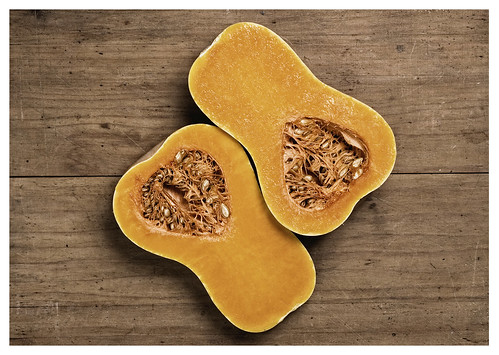
Vegetables are becoming more flavorful and sustainable through plant breeding. Plant breeding is at the core of the seed-to-table movement—using selective breeding to develop plant varieties that possess exceptional culinary properties and the ability to thrive in a sustainable production system.
One plant variety leading the way in this movement is a series of mini-butternut squash developed by a Cornell University researcher, Michael Mazourek. He began the project as part of a $2.5 million Organic Agriculture Research and Extension Initiative (OREI) grant awarded to Oregon State University, which resulted in a national network of organic plant breeders, the Northern Vegetable Improvement Collaborative (NOVIC). The grant is funded by National Institute of Food and Agriculture (NIFA).
These tiny squash and their enhanced flavors caught the attention of chefs around the world, including Dan Barber who premiered the vegetable in his restaurant, Blue Hill, in Greenwich Village, New York. They have also been a hit with growers and at least one type will be available commercially within a year.
Mazourek has been able to continue his research at Cornell University with the help of a $450,000 Agriculture and Food Research Initiative (AFRI) plant breeding grant he received in 2013, which is also funded by NIFA.
Overall, he hopes more flavorful vegetables entice Americans make healthier food choices.
“It should help people want to eat more naturally healthy food,” Mazourek said. “People can find good flavor in their food without feeling like they need to add salt, fat, or sugar. It’s the difference between saying, ‘Eat this wholesome veggie that is very good for you,’ and saying, ‘This veggie tastes incredible— you've got to try it!’”
For these plant varieties to exist, they need to be invented and that's where plant breeding research comes in. Mazourek’s goal is to define what underlies flavor and nutrition. For instance, one facet of his exploration is deciphering the differences in metabolism and nutrient accumulation in an average squash as opposed to a much sweeter, tastier, dark orange squash. He also hopes to develop a new technique of genomic selection that will eliminate wasted labor and allow other researchers to identify the best squash at the seeding stage.
Mazourek’s other successful varieties include the Habanada pepper, a mild habanero; and a cucumber, named “Martini.”
NIFA’s mission: Invest in and advance agricultural research, education, and extension to solve societal challenges. NIFA’s vision: Catalyze transformative discoveries, education, and engagement to address agricultural challenges. For more information, visit http://nifa.usda.gov/.



